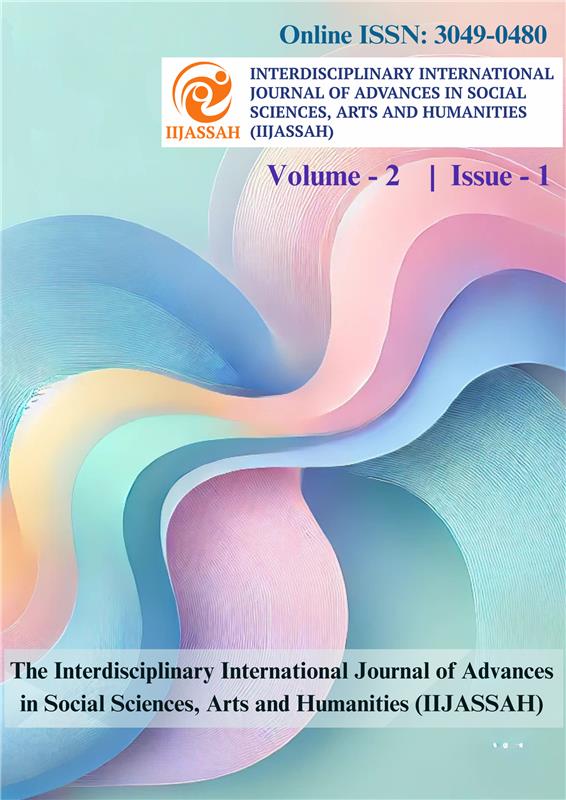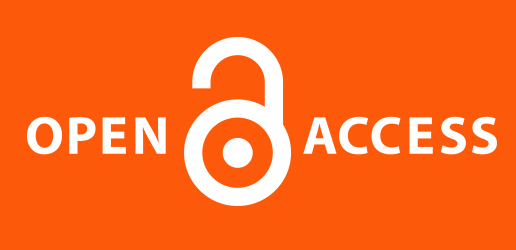Abstract
Maternal identity is a dynamic concept that shifts as a child progresses through different development stages. It is the self-concept and role definition of a mother. During adolescence, mothers may have difficulty finding a balance between their involvement in their children's life and their desire for more independence. As a result, mothers may engage in overprotective and control parenting styles. Maternal identification and overparenting behavior among adolescent mothers between the ages of 13 and 19 are the concern of this study. A cross-sectional quantitative research was conducted to examine the relationship between maternal identity and overparenting (115 mothers completed the Maternal Identity Scale and their adolescent child completed the Helicopter Parenting Instrument to assess overparenting behavior). Pearson's correlation was used to understand the relationship between maternal identity and overparenting. This research will also try to establish the associations among various dimensions of maternal identity, such as emotional stability, maternal confidence, self-efficacy, maternal warmth, kindness, adaptability, toughness, and maternal role fulfilment. The results showed a stronger negative correlation between maternal identity and overparenting, and less likely were warmer, more caring, and more self-sufficient women to overparent. In an attempt to promote positive parenting practices and the development of adolescent autonomy, this study is bringing to light the importance of a balanced maternal identity. Intervention strategies aimed at specific identity-related risk factors could be a topic for future research.
Introduction
Parenting is a dynamic process which is multifaceted and changing constantly as a child makes their way through various stages of growth. The most challenging phase of development to parents and teens is adolescence because adolescents need adult guidance but also yearn for more control and freedom. This creates difficulties in relationships with their children as they did not adjust to their new roles.
The degree to which a mother is aware and believes herself to be a mother is called her maternal identity. Maternal identity is a multifaceted concept that may change over time and is based on a variety of individual and context-dependent factors. Emotional stability, self-efficacy, warmth as a mother, flexibility, and role satisfaction are all factors in mother identity (Gardneret al.,2020). It demonstrates the capacity of a mother to accept her parent role, fulfil her personal and familial obligations, and effectively meet the developmental needs of her child. That is also significant to teenage mothers because it poses the challenge of how to make them independent but retain control. Effective parenting is thought to be largely influenced by maternal identity. Mothers with a healthy self-concept and high confidence in their capability to be effective parents are more likely to practice more nurturing behaviors and enjoy healthier relationships with their children, as contended by Banget al., 2022. Maternal identity deficits like emotional instability or low parenting self-efficacy, on the other hand, cause mothers to overparent and parent their children in an unproductive way.
Over parenting, also referred to as "helicopter parenting," is when parents get overinvolved and tend to have a strong desire to exert a lot of control, protection, and decision-making on children. While motivated by good intentions, overparenting has been discovered to be detrimental to the development of adolescents, diminishing autonomy, escalating anxiety, and stunting problem-solving ability (Leung, 2020). Parental worry and a desire to shield children from failure or harm are the major causes of overparenting. Overinvolved teenagers lose their ability for resilience and independence, two aspects that are vital to making it through adulthood.
Over parenting by mothers is usually indicative of a culture's profile as a whole. Throughout the life of a child, adolescence tends to present problems for mothers in striking a new balance because they must deal with the child's need to become more independent and with their need to control. Because mothers who have faith in their own parenting are less likely to overparent, a mother's identity has to be an underlying component of what determines these tendencies. Various theoretical models, including attachment theory (Bowlby, 1969) and self-determination theory (Deci and Ryan, 1985), can be utilized to describe the interaction between maternal identity and overparenting. According to the self-determination hypothesis, people are driven by a desire for relatedness, competence, and autonomy. It is suggested that mothers with healthy maternal identities are usually good parents and supportive of their children's autonomy. Moms may overparent, however, out of identity vulnerabilities that cause them to overcompensate with controlling tactics.
According to attachment theory, when parent and child form a secure relationship, the child will develop socially and emotionally well and healthy. Strongly identified mothers encourage a secure relationship to their children because they feel proud of being mothers. Support, responsiveness, and warmth are attributes of secure attachments. These mothers are better able to endure the demands of puberty but are still in a very strong affective relationship. Insecure attachments linked with maternal identity risk are more directly associated with overparenting behavior. In trying to contribute meaningful addition to the definition of overparenting, the current study examines the interaction between maternal identity and overparenting.
OBJECTIVES:
· To explore the relationship between maternal identity and maternal overparenting behaviors.
· To examine how specific aspects of maternal identity such as emotional stability, confidence, self-efficacy, warmth, kindness, adaptability, toughness, and role fulfilment relate to maternal overparenting behaviors.
· To understand the differences in maternal overparenting among male and female teenagers.
Literature Review
Three clusters of themes constitute this literature review: (1) the psychological and developmental consequences of overparenting; (2) the role of parental style in adolescent identity and autonomy; and (3) the increasing power of maternal identity in influencing parent behaviour.
1. The Psychological and developmental consequences of overparenting:
Leung, (2020) found that with heightened parent-child conflict, maternal overparenting significantly increased teen anxiety. School belonging moderates the influence of maternal overparenting according to (Luoet al., 2024), which was a more potent predictor of teen stress and depression than paternal actions. Over parented adolescents show poorer emotional resilience and decision-making capacity, according to (Uroneet al., 2024). Yinet al., (2025) also illustrated that overparenting affects adolescents' subjective well-being which is reflected through decreased self-efficacy and motivation to learn. Overparenting also hinders emotional intelligence and cognitive flexibility, two traits required for adolescent adaptability, according to (Wuet al., 2020). These results are parallel to (Demissie & Pearse, 2025), who put strong emphasis on the fact that overinvolved parental behaviors significantly, affects children's competence, autonomy, and self-control.
2. The role of parental style in adolescent identity and autonomy
Adolescent identity formation requires a balance between independence and parental support. Excessive parental protection is associated with a decreased self-differentiation and an increase in identity confusion as (Skhirtladze & Van Petegem, 2025) assert. Jiet al., (2023) state that teen ego-identity and emotional maturity are enhanced by maternal co-parenting that fosters autonomy. Phippset al., (2025) argues that, fulfilment of psychological needs such as relatedness and competence is linked to autonomy-supportive parenting. As maintained by Çakmak Tolan & Bolluk Uğur, (2023), psychological stability and resilience are developed by parental affection and balance in parenting. Wuet al., (2022) also noted that though overparenting might seem to be helpful, it can really blur emotional boundaries and create dependency, especially when combined with intrusive control.
3. The increasing power of maternal identity in influencing parent behaviour
Through a systematic review on psychological interventions that strengthen the self-concept of the adolescent mother (Jiao & Segrin, 2023) explored that lower levels of maternal overparenting are linked to a healthy maternal identity. According to Gardneret al., (2020), successful parenting and maternal well-being are linked to implicit maternal confidence cross-culturally. Increased mother identity and parenting self-efficacy levels significantly lower the likelihood of over controlling behaviour since empirical studies by (Glatzet al., 2023) have proved. Mothers who possess stable self-identity are more capable of adapting to the parent challenges, especially to the challenges of adolescence stage of the child since (Leeet al., 2025) have established.
Whereas previous research highlights the negative consequences of overparenting and the buffering influence of maternal self-confidence, there is no particular evidence to report on the link between maternal identity and overparenting, and this particularly so among adolescent mothers. This link is far greater in the Indian societal context, where mother roles are much more frequently inextricably linked with family demands. By thoroughly examining the extent to which emotional stability, self-confidence, self-efficacy, flexibility, and job satisfaction—being essential components of motherhood identity—are significant predictors of overparenting behaviors among mothers of adolescents, this study addresses this significant research gap.
Methodology
Research design:
A cross-sectional quantitative research design was employed in this study.
Hypothesis:
H1: There will be a significant relationship between maternal identity and maternal overparenting behaviors among mothers of teenagers.
H2: There will be a significant relationship between maternal emotional stability and maternal overparenting behaviors among mothers of teenagers.
H3: There will be a significant relationship between Maternal confidence & self-efficacy and maternal overparenting behaviors among mothers of teenagers.
H4: There will be a significant relationship between maternal warmth & kindness and maternal overparenting behaviors among mothers of teenagers.
H5: There will be a significant relationship between maternal adaptability & toughness and maternal overparenting behaviors among mothers of teenagers.
H6: There will be a significant relationship between maternal role fulfilment and maternal overparenting behaviors among mothers of teenagers.
H7: There will be a significant difference in maternal overparenting among male and female teenagers.
H8: There will be a significant difference in maternal overparenting among singletons and teenagers with siblings.
H9: There will be a significant difference in maternal overparenting among teenagers from nuclear family and joint family.
Data collection:
The study involved 115 mothers and their adolescent children aged 13 to 19 years. The study included adolescents from all birth orders, family types and those mothers residing in Chennai along with their adolescent teenagers. Participants were recruited using purposive sampling. Two validated instruments were used to collect the required data from samples which includes,
1. Maternal Identity Scale: This 24 item scale, developed by K. L. Condon and J. M. Esposito (1985) assesses maternal identity through six subscales which includes role fulfilment, emotional stability, toughness, warmth, adaptability, and confidence. The respondents rank oneself against each given statement (e.g., 'nurturing' vs. 'neglectful') through 7-point semantic difference scale. The scale was found to have good reliability (Cronbach's alpha = 0.85) and strong construct validity.
2. Helicopter Parenting Scale: This 15-item scale, constructed by Oden Weller et al. (2014), assesses perceived overparenting on a 5-point Likert scale (1 = strongly disagree and 5 = strongly agree). It has subscales of emotional intrusiveness, problem-solving interference, and autonomy constraint. High reliability was observed (Cronbach's alpha = 0.80), indicating good internal consistency of the scale. Additionally, the scale exhibits strong construct and convergent validity.
The questionnaires were administered in person during school visits as self-report paper-pencil surveys. Mothers completed the Maternal Identity Scale independently, while adolescents filled out the Helicopter Parenting Instrument in the presence of a research assistant. This ensured clarity and minimized response bias.
Statistical analysis:
Data was analyzed using SPSS 26 (Statistical package for social sciences). Descriptive statistics was used to understand the distribution of data. Pearson’s product moment correlation was used to understand the relationship between maternal identity, its specific aspects and maternal overparenting. Independent sample ‘t’ test was used to understand the significant difference in maternal overparenting among teenagers based on gender, birth order and family type.
Results
| Personal details | Groups | N | % |
|---|---|---|---|
| Gender of Child | Male | 60 | 52.2 |
| Female | 55 | 47.8 | |
| Birth Order | Singletons | 21 | 18.26 |
| First Born | 49 | 42.61 | |
| Later Born | 39.13 | ||
| Family type | Nuclear | 85 | 73.90 |
| Joint | 30 | 26.10 |
Table I shows the demographic characteristics of the sample. A nearly equal distribution is observed in the gender of the children, with 52.2% (n = 60) male and 47.8% (n = 55) female. Regarding birth order, 18.26% (n = 21) are singletons, 42.61% (n = 49) are first-borns, and 39.13% (n = 45) are later-borns. With respect to family type, the majority of children come from nuclear families (73.90%, n = 85), while 26.10% (n = 30) belong to joint families.
| Variables | Correlating variable | r - value | p - value |
|---|---|---|---|
| Maternal Identity | Maternal Overparenting | -0.48 | <0.01 |
| Emotional Stability | -0.45 | <0.01 | |
| Maternal confidence and self-efficacy | -0.38 | <0.05 | |
| Maternal warmth and kindness | 0.43 | <0.01 | |
| Adaptability and Toughness | -0.50 | <0.01 | |
| Maternal role fulfilment | -0.35 | <0.05 |
Table II illustrates the relationship between maternal overparenting and various psychological dimensions of the mother. Significant negative correlations were found with maternal identity (r = -0.48, p < 0.01), emotional stability (r = -0.45, p < 0.01), maternal confidence and self-efficacy (r = -0.38, p < 0.05), and maternal role fulfilment (r = -0.35, p < 0.05). A strong negative correlation also appeared with adaptability and toughness (r = -0.50, p < 0.01). Interestingly, maternal warmth and kindness showed a positive correlation (r = 0.43, p < 0.01).
| Gender | Mean | SD | t - value | p - value |
|---|---|---|---|---|
| Male teenagers | 7.90 | 3.15 | 2.25 | < 0.05 |
| Female teenagers | 7.61 | 2.67 | ||
Table III shows the differences in maternal overparenting as perceived by teenagers of different genders. Male teenagers showed a mean overparenting score of 7.90 (SD = 3.15), while female teenagers expressed a slightly lower mean of 7.61 (SD = 2.67). A statistically significant difference was identified between the two groups (t = 2.25, p < 0.05), indicating that gender plays a role in the perception of maternal overparenting.
| Birth Order | Mean | SD | t - value | p - value |
|---|---|---|---|---|
| Singletons | 3.52 | 0.74 | 2.05 | < 0.05 |
| Child with Siblings | 3.26 | 0.68 | ||
Table IV displays how maternal overparenting scores vary with the birth order of the child. Singletons reported a higher mean score (M = 3.52, SD = 0.74) compared to children with siblings (M = 3.26, SD = 0.68). The difference between the two groups was statistically significant (t = 2.05, p < 0.05), suggesting that birth order influences maternal overparenting behaviors.
| Family type | Mean | SD | t - value | p - value |
|---|---|---|---|---|
| Nuclear family | 6.71 | 2.55 | 2.13 | < 0.05 |
| Joint family | 6.29 | 2.72 | ||
Table V represents the differences in maternal overparenting across family types. Children from nuclear families reported a higher mean score of maternal overparenting (M = 6.71, SD = 2.55) compared to those from joint families (M = 6.29, SD = 2.72). The difference was statistically significant (t = 2.13, p < 0.05), indicating that family structure may have an impact on overparenting tendencies.
Discussion
Maternal over-parenting is also commonly defined as overly controlling and overly involved parenting that could affect the development of the kid as well as the mother's mental health. Because of these possibility, this form of parenting has come under more scrutiny (Obradović, 2021). Research consistently indicates that, although parental engagement is crucial, over engagement on the part of parents can have negative effects on the development of competence, autonomy, and self-regulation in children (Demissie & Pearse, 2025; Reynoldset al., 2021; Yinet al., 2025)
According to the present research, overparenting tendencies and maternal identity are strongly negatively correlated (r = -0.48, p < 0.01), which shows that women who are aware of one's maternal identity are less likely to be excessively controlling. This supports H1 and is consistent with the work of (Yaffe, Yet al., 2024), where they suggest that good maternal identity increases parental self-efficacy, which reduces overparenting likelihood. Hence H1 is accepted.
Stable employed mothers are more likely to give liberty to their children by trusting them and believing in them to make choices and learn from mistakes. To corroborate this, Uroneet al., (2024) found that overparenting had been linked to higher levels of internalizing (e.g., anxiety and unhappiness) and externalizing (e.g., hostility and disobedience) symptoms in emerging adults thorough development outcome assessment. Strong mother identities seem to function as a buffer and facilitate healthy parenting practices that foster children's emotional growth.
Emotional stability is also an important psychological characteristic that has a high negative correlation with overparenting (r = -0.45, p < 0.01), supporting H2. This result supports previous studies by (Lee et al., 2025; Rejaänet al., 2024), which highlighted the higher likelihood of autonomy-supportive parenting practices among emotionally healthy mothers. They tend to support without overdoing, which enables children to solve problems and overcome difficulties independently. Hence H2 is accepted.
Besides, mothers who are confident and capable parents will not likely employ controlling behaviors since, as is revealed by the moderately negative relationship (r = -0.38, p < 0.05) between maternal confidence and overparenting, thereby supporting H3. This accord with Bandura's (1997) social cognitive theory, where self-efficacy is focused upon as impacting behavior. A woman will be less likely to overcontrol if she has a higher parental self-efficacy because it strengthens her capability for handling stress and ambiguity. Hence H3 is accepted.
Adaptability and toughness were also negatively correlated most with maternal overparenting (r = -0.50, p < 0.01), supporting H5. This research emphasizes the importance of psychological adaptability in parenting. Adaptive and resilient mothers are best suited to alter their parenting approaches based on children's developmental needs and individual differences. (Wuet al., 2020) say that because flexible parenting enables children to try and make mistakes, it promotes the development of children's emotion control and problem-solving capacity. Hence H5 is accepted.
Likewise, the inverse relationship between overparenting and satisfaction of maternal role (r - -0.35, p < 0.05) supporting H6 suggests that, content and fulfilled mothers will not be inclined to apply excessive control. Satisfaction of their maternal role is a powerful predictor of balanced parenting styles and is associated with high maternal well-being. Mothers are more likely to foster autonomy and trust in children when they have success and satisfaction in their professional lives, as (Partainet al., 2021) contend. Hence H6 is accepted.
In an interesting turn of events, overparenting was found to have a strong positive relationship with maternal warmth (r = 0.43, p < 0.01), yet also as a nuanced contributor to parenting, which supports H4. Although maternal warmth and kindness are usually linked with better child adjustment, over-nurturing might also contribute to overprotection and boundary indistinctness (Wuet al., 2022). In protecting them from typical impediments to development, overly nurturing parents might actually be undermining their children's autonomy and self-esteem. This paradox may be explained in terms of cultural expectations.
Protective involvement and emotional closeness are valued dimensions of parenting within collectivistic cultures especially in a country like India, and the exhibition of warmth is not necessarily distinct from control. What has been referred to as "overparenting" within one culture may be regarded as good, affectionate care within another. This cultural nuance may underlie the observation that maternal warmth correlates positively with overparenting—suggesting a parenting style emphasizing protection and affection but in practice limiting autonomy (Cohrdes and Göbel, 2022). Hence H4 is accepted.
With greater values for male teens (M = 7.90, SD = 3.15) than for female teens (M = 7.61, SD = 2.67) and having a statistically significant t value of 2.25 (p < 0.05), gender differences also in perceived overparenting were found to exist that supports H7. Due to societal pressure on masculinity and behavioral control, boys' conduct is typically regulated and monitored to a greater degree than girls' behavior, perhaps indicating gendered parenting practices (Preston, 2023). Hence H7 is accepted. Parenting styles were also seen to have been influenced by birth order. Singletons indicated higher maternal control (M = 3.52, SD = 0.74) than children with siblings (M = 3.26, SD = 0.68), and there was a significant t-value of 2.05 (p < 0.05). This supports H8 and confirms previous findings by (Chavda & Nisarga, 2023; Greenet al., 2024), who posited that mothers tend to give their single children more attention and engagement, which can sometimes manifest as overparenting. Hence H8 was accepted.
The last factor was family structure. Compared to children who belonged to joint families (M = 6.29, SD = 2.72), children who belonged to nuclear families reported a significantly higher rate of overparenting (M = 6.71, SD = 2.55) (t = 2.13, p < 0.05), supporting H9. Joint family systems tend to weaken parental control by weakening individual parental pressures. Hence H9 is accepted.
All of the hypotheses (H1–H9) are supported by the results, which highlight the strong influence of maternal psychological characteristics, parenting self-efficacy, family functioning, and sociodemographic factors on overparenting behaviors. To facilitate healthy parenting practices and optimal child development, interventions for parents must address not only behavior but also strengthen the mother's identity, self-esteem, and emotional resilience.
Limitations
Though the present study offers valuable insights into mothers' psychological and demographic predictors for overparenting, it has certain limitations. This study is cross-sectional, which limits the ability to establish a cause-and-effect relationship. Self-report, although being convenient, is prone to social desirability bias, especially when tapping sensitive occurrences such as parenting and maternal identity. Participants were limited to middle-class mothers, predominantly from urban Tamil Nadu, which may restrict generalizability to other rural or socio-economic populations. Parenting styles are also influenced by cultural context, and findings may not be entirely generalizable across other cultural settings. The study also did not include the perspectives of children or fathers, whose exclusion may be ignoring essential relational dynamics.
Future Scope
Longitudinal studies are required to understand the causal relationships and observe how maternal traits and parenting behaviors evolve over time, particularly across different developmental stages of children. Additionally, this study focused exclusively on mothers; future research should include fathers and investigate co-parenting dynamics to gain a more comprehensive understanding of family influences on overparenting. The sample was limited to middle-aged, middle-class mothers from Tamil Nadu, so replicating this study in diverse cultural, regional, and socio-economic settings could disclose important contextual differences. Qualitative studies may also help explore the subjective experiences of parenting, especially the paradoxical coexistence of warmth and control in collectivist cultures. Future research should also consider the influence of temperament of the child, birth order, and parent-child attachment patterns on overparenting behaviours. Intervention-based research can be conducted with an aim of improving maternal identity, self-efficacy, and emotional regulation, which may help reduce overparenting behaviors and promote autonomy-supportive parenting.
Conclusion
As such, the findings of this study suggest that overparenting will be more prevalent in mothers less confident, emotionally unstable, or less adaptable. On the other hand, being overly involved would inadvertently contribute to overparenting if the mothers express warmth and kindness. This argument goes in concordance with the fact that there are vast literatures emphasizing that parenting styles require balance (Çakmak Tolan & Bolluk Uğur, 2023b). The study further reveals that differences in parenting behavior are highly determined by gender, birth order, and family type. Male teens are controlled much more than their female counterparts as a result of cultural norms that may have fostered such gender differences. Also, children of single parents have a higher risk of being overparented relative to those whose parents have two or more kids. Nuclear families have more involved and controlling parents than joint family settings, with the latter offering more extended responsibilities. Training of parents in such a way as to enhance their confidence, emotional resilience, and adaptability so that warmth and kindness do not translate into overcontrol would reduce the tendencies for overparenting. Campaigns should be raised about the birth order and family structure that are affecting parenting. Future research needs to examine whether interventions based on these factors impact parenting behaviors and, ultimately, child development long-term.
Conflict of Interest
The authors declare that there is no conflict of interest regarding the publication of this paper. All research activities and findings have been conducted and presented with full objectivity and academic integrity.
Acknowledgement
The author extends heartfelt gratitude to all the samples of this study for spending their valuable time and sharing required information for the survey.
Funding
No fundings was received.
References
- Bang, K.-S., Kim, S., Lee, G., Jeong, Y., Shin, D., & Kim, M. (2022). Intervention Studies on the Enhancement of Self-Concept Among Adolescent Mothers: A Systematic Review. Journal of Psychosocial Nursing and Mental Health Services, 60(3), 31–39. https://doi.org/10.3928/02793695-20210819-03
- Bowlby, J. (1969). Attachment and loss. In Attachment and loss. (2. ed). Basic Books.
- Çakmak Tolan, Ö., & Bolluk Uğur, G. (2023a). The relation between psychological resilience and parental attitudes in adolescents: A systematic review. Current Psychology, 43(9), Article 9. https://doi.org/10.1007/s12144-023-04966-7
- Çakmak Tolan, Ö., & Bolluk Uğur, G. (2023b). The relation between psychological resilience and parental attitudes in adolescents: A systematic review. Current Psychology, 43(9), Article 9. https://doi.org/10.1007/s12144-023-04966-7
- Chavda, K., & Nisarga, V. (2023). Single Parenting: Impact on Child’s Development. Journal of Indian Association for Child and Adolescent Mental Health, 19(1), 14–20. https://doi.org/10.1177/09731342231179017
- Cohrdes, C., & Göbel, K. (2022). A Lot of Warmth and a Bit of Control? How Parenting Mediates the Relationship Between Parental Personality and Their Children’s Mental Health Problems. Journal of Child and Family Studies, 31, 2661–2675. https://doi.org/10.1007/s10826-021-02210-z
- Deci, E. L., & Ryan, R. M. (1985). Intrinsic Motivation and Self-Determination in Human Behavior. https://link.springer.com/book/10.1007/978-1-4899-2271-7
- Demissie, F., & Pearse, S. (2025). Parental engagement and transformation as a marker of quality in Early Childhood Education and Care. Journal of Early Childhood Research, 23(1), 93–106. https://doi.org/10.1177/1476718X241293899
- Gardner, W. L., Rotella, K. N., & Nikolovski, J. (2020a). Implicit Maternal Intuition Confidence Is Associated With Maternal Well-Being Across Cultures. Frontiers in Psychology, 11. https://doi.org/10.3389/fpsyg.2020.00289
- Gardner, W. L., Rotella, K. N., & Nikolovski, J. (2020b). Implicit Maternal Intuition Confidence Is Associated With Maternal Well-Being Across Cultures. Frontiers in Psychology, 11. https://doi.org/10.3389/fpsyg.2020.00289
- Glatz, T., Lippold, M., Chung, G., & Jensen, T. M. (2023). A Systematic Review of Parental Self-efficacy Among Parents of School-Age Children and Adolescents. Adolescent Research Review, 9(1), Article 1. https://doi.org/10.1007/s40894-023-00216-w
- Green, D. S., Goldstein, A. L., Zhu, J. Y., Hamza, C. A., Scharfe, E., & Molnar, D. S. (2024). Parents’ Influences on Well-being in Emerging Adulthood: The Role of Basic Psychological Needs. Journal of Child and Family Studies, 33(10), Article 10. https://doi.org/10.1007/s10826-024-02912-0
- Ji, W., Lan, R. M., Ma, P., Zhang, H., & Fan, L. (2023). Maternal positive coparenting and adolescent ego-identity: The chain mediating role of fathers’ marital satisfaction and adolescent peer relationships. Frontiers in Psychology, 14(2). https://doi.org/10.3389/fpsyg.2023.1227941
- Jiao, J., & Segrin, C. (2023). Moderating the Association Between Overparenting and Mental Health: Open Family Communication and Emerging Adult Children’s Trait Autonomy. Journal of Child and Family Studies, 32(3), Article 3. https://doi.org/10.1007/s10826-022-02528-2
- Lee, K. Q., Barlas, J., & Gill, D. (2025a). Learning to thrive through autonomy: A thematic analysis of the role of recalled parental autonomy in the transition to motherhood. Current Psychology, 44(4), Article 4. https://doi.org/10.1007/s12144-025-07311-2
- Lee, K. Q., Barlas, J., & Gill, D. (2025b). Learning to thrive through autonomy: A thematic analysis of the role of recalled parental autonomy in the transition to motherhood. Current Psychology, 44(4), Article 4. https://doi.org/10.1007/s12144-025-07311-2
- Leung, J. T. Y. (2020). Too Much of a Good Thing: Perceived Overparenting and Wellbeing of Chinese Adolescents in Hong Kong. Child Indicators Research, 13(5), Article 5. https://doi.org/10.1007/s12187-020-09720-0
- Luo, X., Ren, M., Han, X., Wu, M., Jiang, N., Wang, Y., & Xia, Y. (2024). The effects of overparenting on depression, anxiety, and stress in adolescents: Moderating effects of school connectedness and gender differences. Current Psychology, 43(31), 25646–25660.
- Obradović, J. (2021). Study reveals impact of too much parental involvement. Stanford Report. https://news.stanford.edu/stories/2021/03/study-reveals-impact-much-parental-involvement
- Partain, J. A., Nelson, J. A., & Hafiz, M. (2021). Parents’ Obedience Beliefs and Autonomy Granting: The Role of Child Externalizing and Parent Anxiety. Journal of Child and Family Studies, 31(2), Article 2. https://doi.org/10.1007/s10826-021-02087-y
- Phipps, D. J., Green, W. T., Lintunen, T., Knittle, K., & Hagger, M. S. (2025). Linking Autonomy-Supportive Parenting with Their Children’s Autonomous Motivation Toward, and Participation in, Physical Activity. International Journal of Behavioral Medicine, 1–7. https://doi.org/10.1007/s12529-025-10358-x
- Preston, N. (2023). The Impact of Gender Expectations on Boys and Young Men | Psychology Today. https://www.psychologytoday.com/us/blog/communication-success/202306/the-impact-of-gender-expectations-on-boys-and-young-men
- Rejaän, Z., van der Valk, I., Schrama, W., & Branje, S. (2024). Parenting, Coparenting, and Adolescents’ Sense of Autonomy and Belonging After Divorce. Journal of Youth and Adolescence, 53(6), Article 6. https://doi.org/10.1007/s10964-024-01963-2
- Reynolds, A. J., Lee, S., Eales, L., Varshney, N., & Smerillo, N. (2021). Parental Involvement and Engagement in Early Education Contribute to Children’s Success and Well-Being. https://doi.org/10.1007/978-3-030-74617-9_6
- Skhirtladze, N., & Van Petegem, S. (2025). Perceived Overprotective Parenting and Identity Synthesis and Confusion in Georgian Emerging Adults: The Intervening Role of Goal Engagement and Disengagement. Journal of Adult Development, 32(1), 1–11. https://doi.org/10.1007/s10804-024-09475-w
- Urone, C., Verdi, C., Iacono, C. L., & Miano, P. (2024). Dealing with Overparenting: Developmental Outcomes in Emerging Adults Exposed to Overprotection and Overcontrol. Trends in Psychology, 1–26. https://doi.org/10.1007/s43076-024-00407-x
- Wu, C.-W., Chen, W.-W., & Jen, C.-H. (2020). Emotional Intelligence and Cognitive Flexibility in the Relationship Between Parenting and Subjective Well-Being. Journal of Adult Development, 28(2), Article 2. https://doi.org/10.1007/s10804-020-09357-x
- Wu, Y., Yuan, R., & Wu, Y. (2022). Good can be stronger than bad: The daily relationship among maternal warmth, mother-teen conflict and adolescents’ self-esteem. Current Psychology, 42(29), Article 29. https://doi.org/10.1007/s12144-022-03718-3
- Yaffe, Y, Grinshtain, Y, & Harpaz, Y. (2024). Maternal identity and parenting self-efficacy as predictors of parenting behavior. Journal of Family Psychology, 38(2), 201–215.
- Yin, X., Jia, S., Shao, Y., & Zhang, L. (2025). The impact of parental educational expectations on subjective well-being among adolescents: The serial mediating role of self-efficacy and learning engagement. BMC Psychology, 13(1), 353. https://doi.org/10.1186/s40359-025-02669-1












